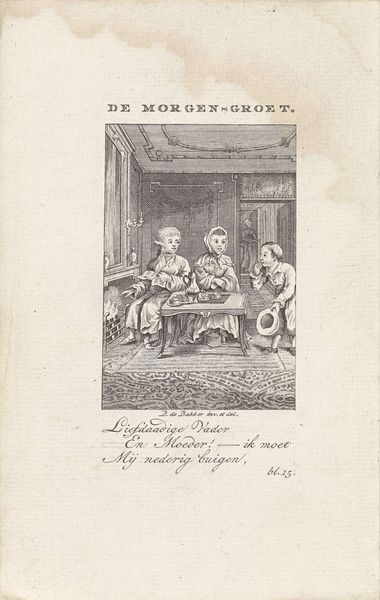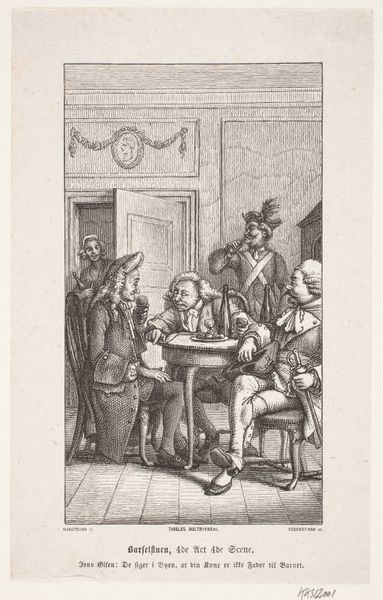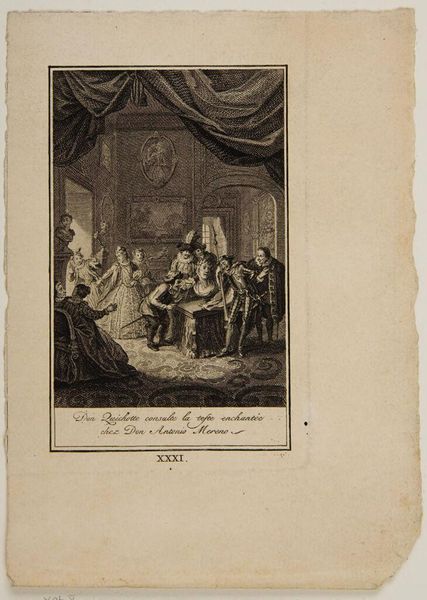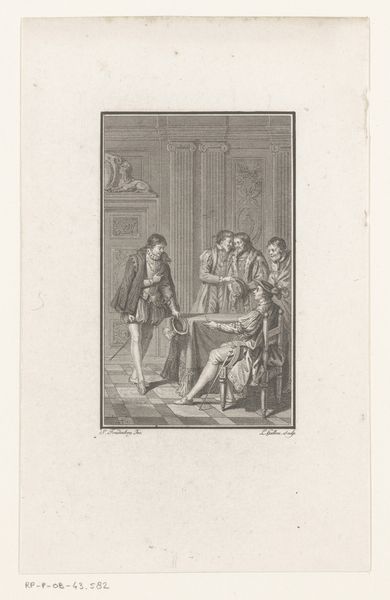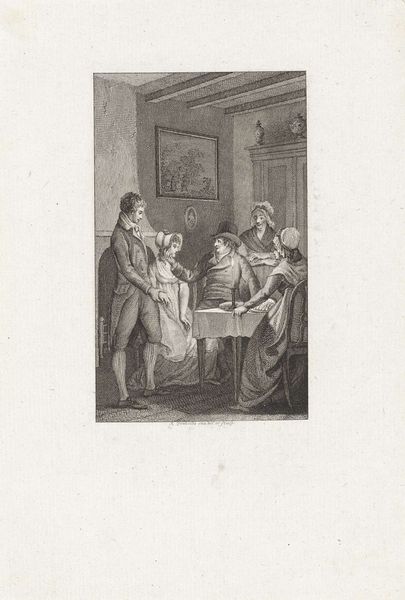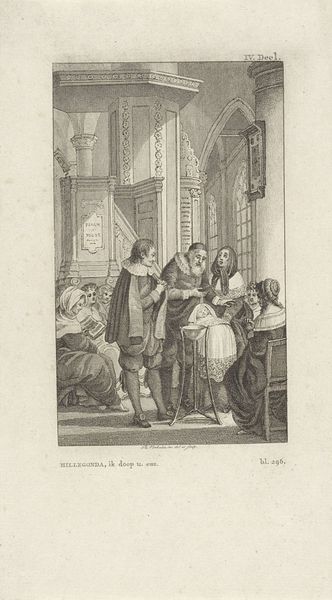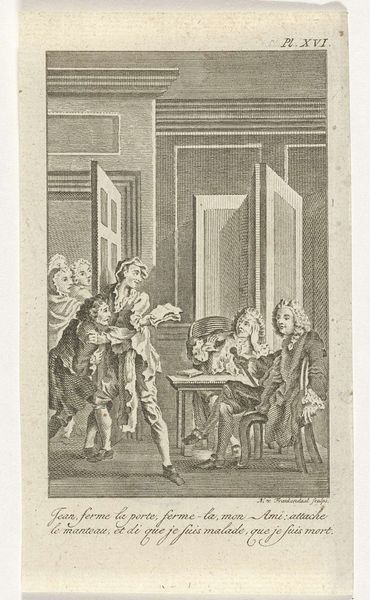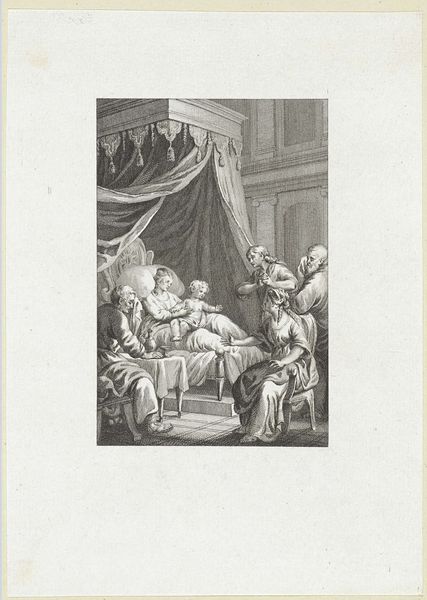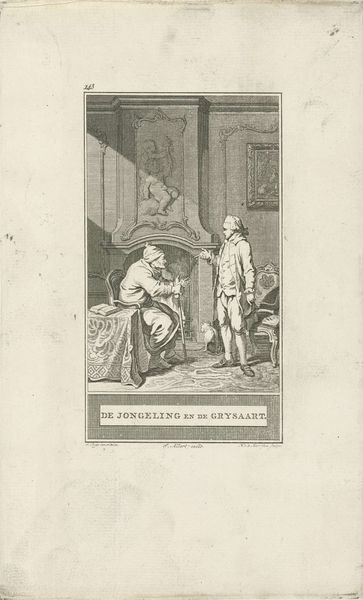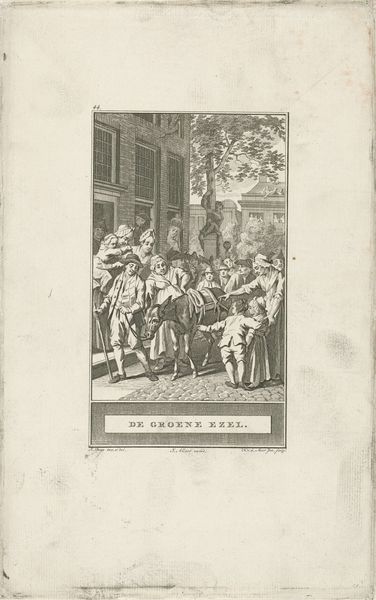
print, engraving
#
portrait
#
aged paper
#
toned paper
# print
#
old engraving style
#
personal sketchbook
#
child
#
romanticism
#
genre-painting
#
engraving
Dimensions: height 178 mm, width 112 mm
Copyright: Rijks Museum: Open Domain
Editor: This print, "Children Singing with Their Father and Mother by an Organ" by Barent de Bakker, created in 1789, feels very intimate. You can almost hear their voices. It's just an engraving, but what is its value today? Curator: As a print, its value lies not in its uniqueness but in its reproducibility. Consider the socioeconomic implications of easily distributed images during this period. Who had access to such imagery, and what messages were they consuming? Was this affordable for the artisan class, or only accessible to the burgeoise, informing how they thought about their role in society? Editor: I see what you mean. So, the very materiality of the print – the paper, the ink, the method of reproduction – is just as important as the image itself. Curator: Precisely. The choice of engraving suggests a specific mode of production, reflecting labor practices. What does this say about the artist's relationship to their work, and the market forces at play in 18th-century Holland? Think about the consumption of images, the market of devotional artworks or portraits for domestic interiors at that time. Were prints viewed simply as decoration, or did they function as social currency? Editor: Interesting! The description mentions that it’s printed on aged or toned paper; how does this affect our perception of its meaning and value now? Curator: It changes our perception greatly. The “aged” effect makes the viewer conscious of its historical significance and process; the change and degradation of the image makes the viewer conscious of materiality. Editor: So, considering the materials and production process opens a window into understanding the broader societal values and power structures of the time? Curator: Exactly! By analyzing the "how" and "what" of its creation, we understand this engraving as more than just a charming family scene, it's an entry point to the material conditions of its era.
Comments
No comments
Be the first to comment and join the conversation on the ultimate creative platform.
